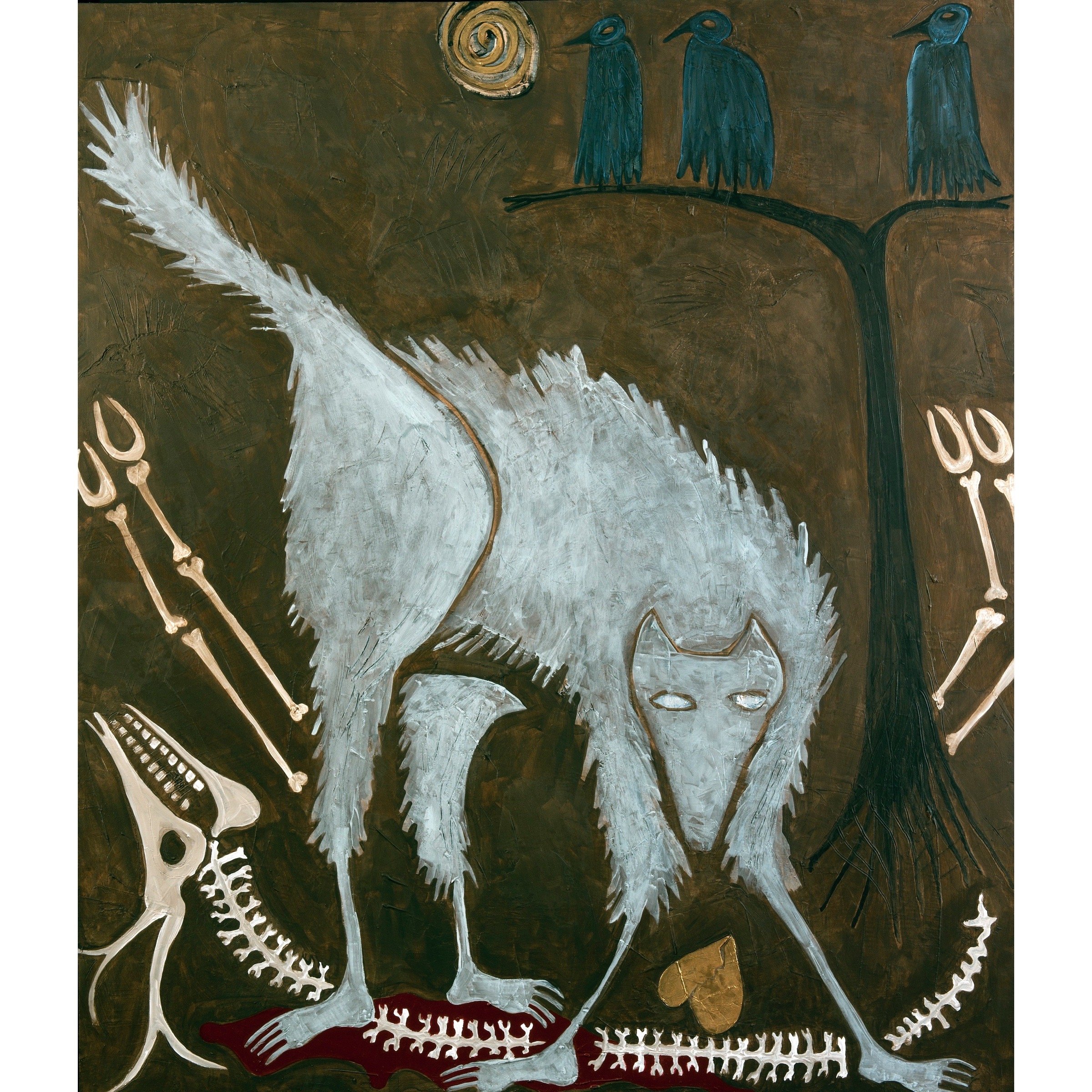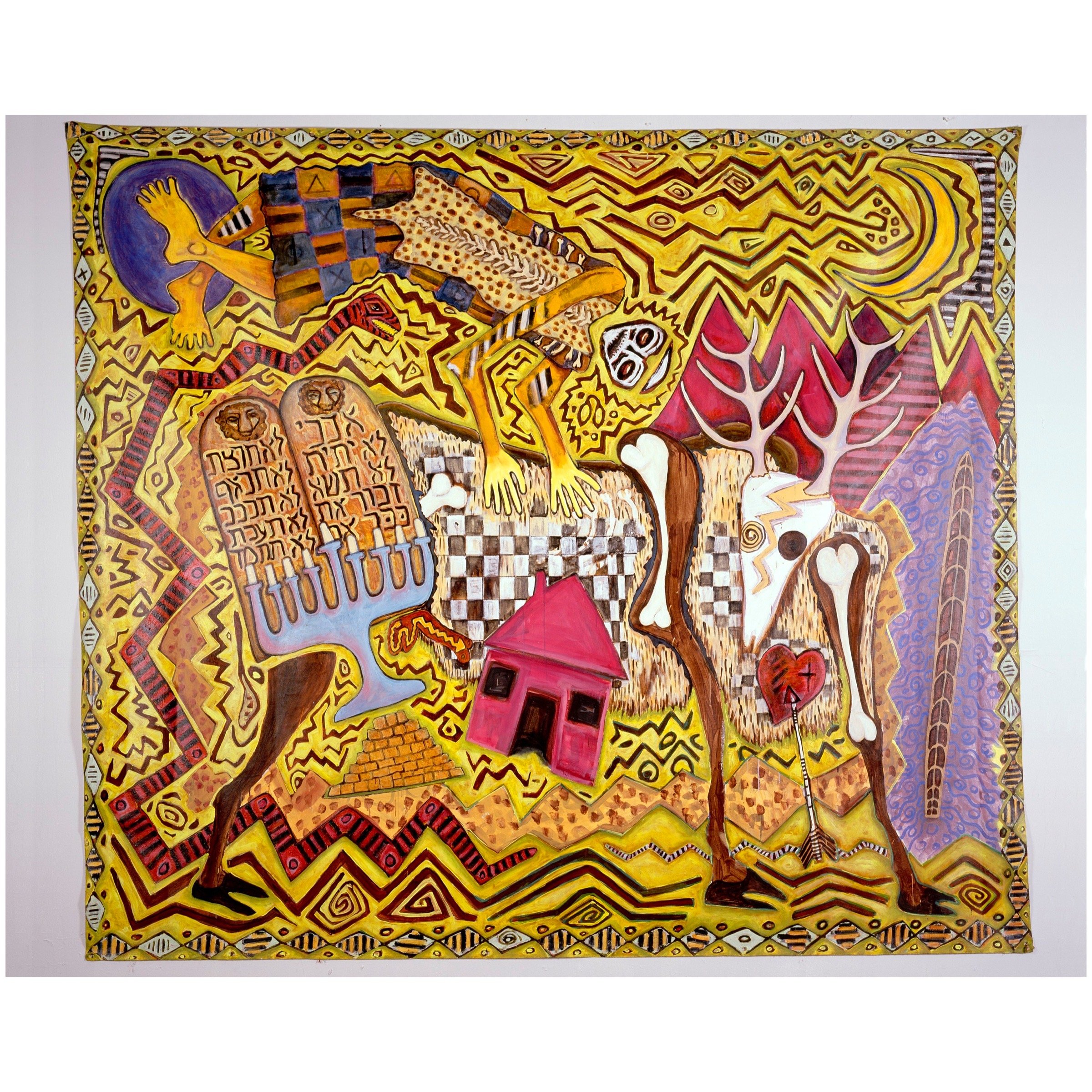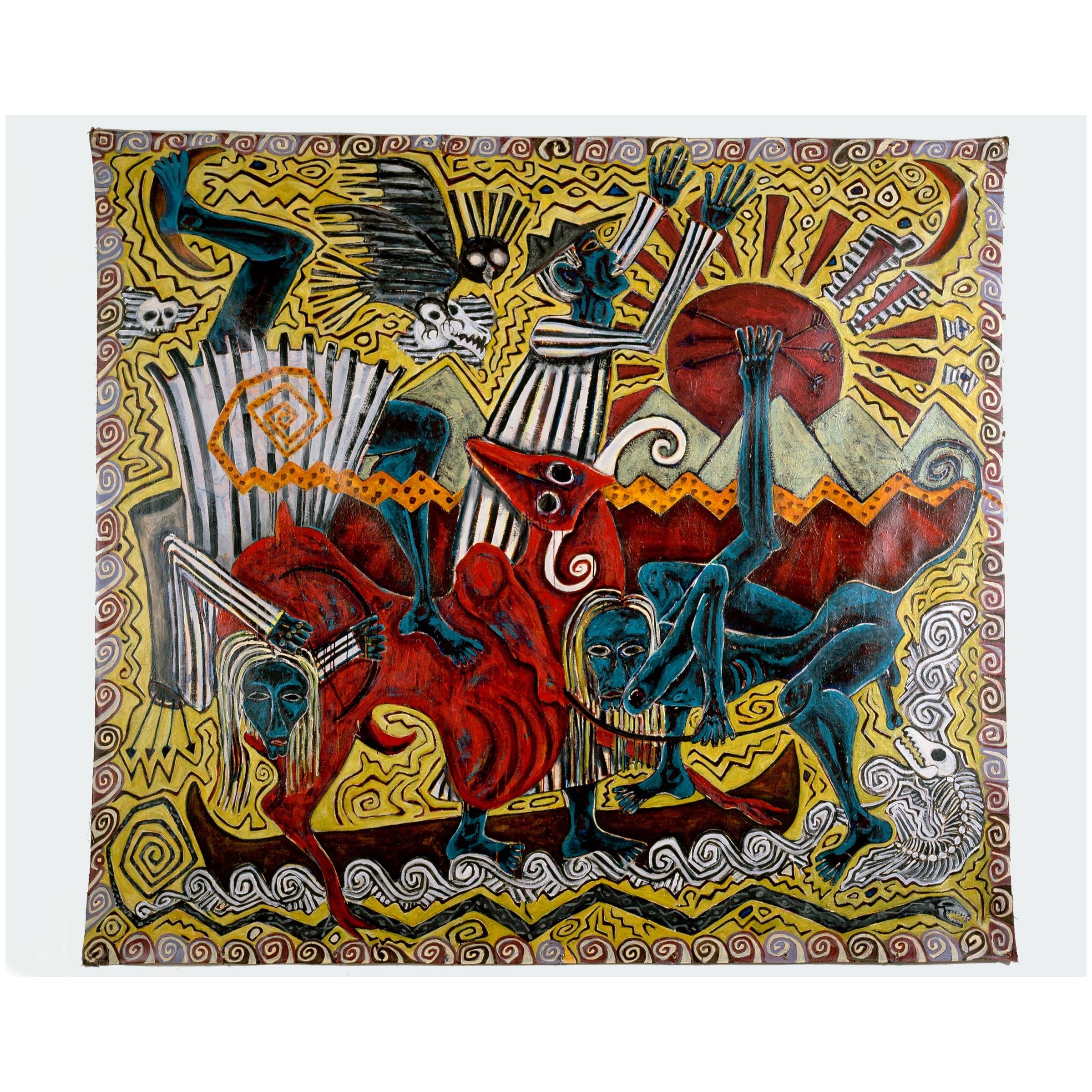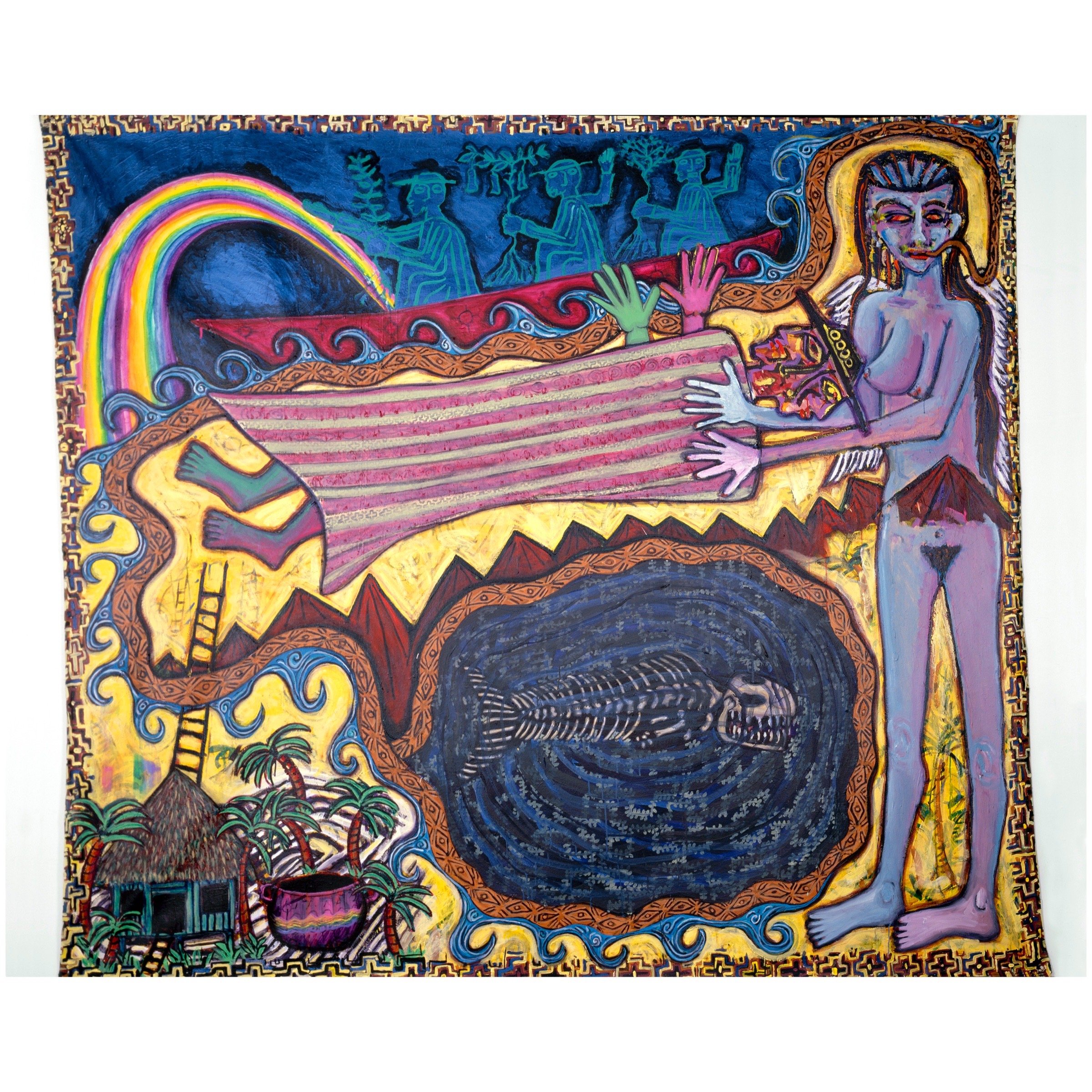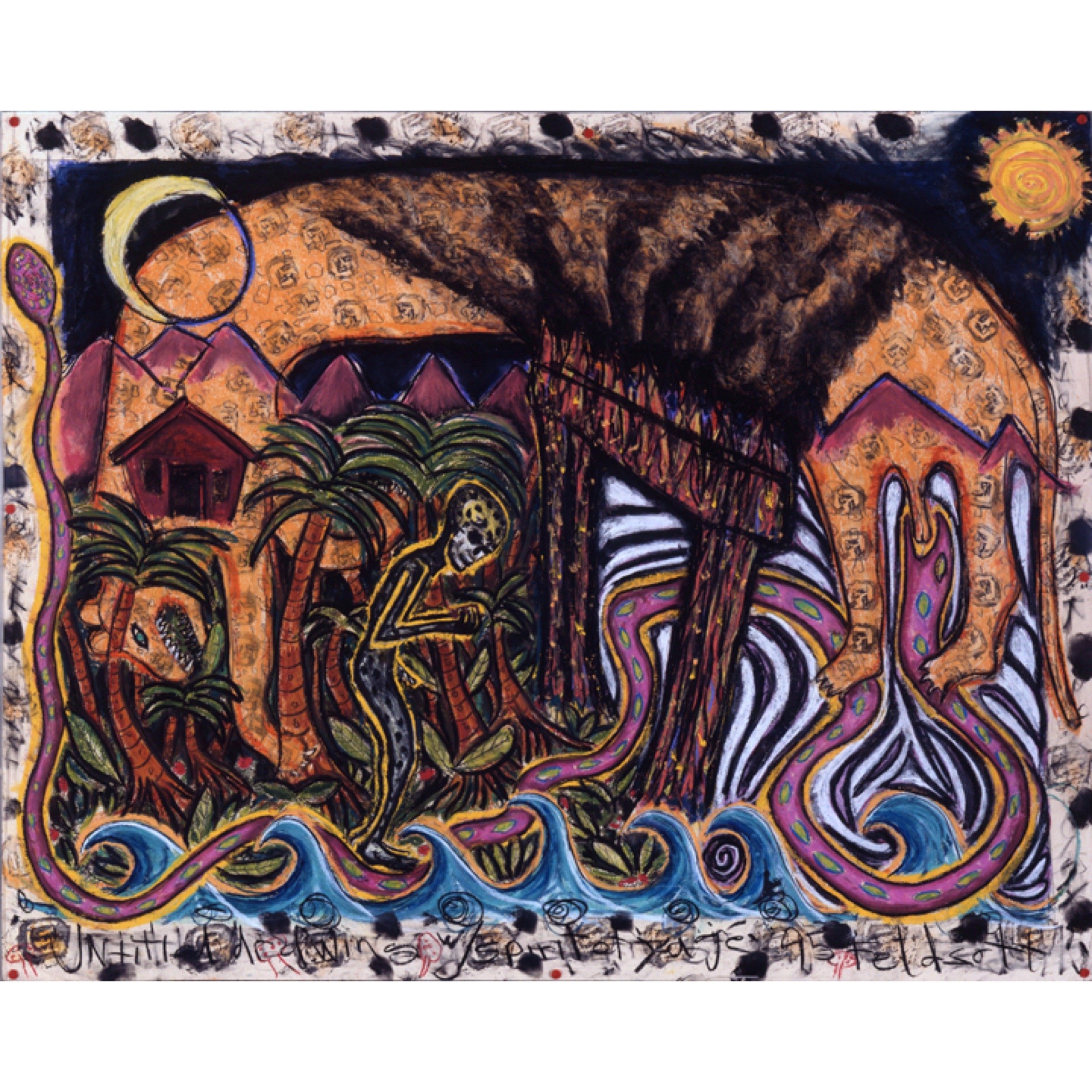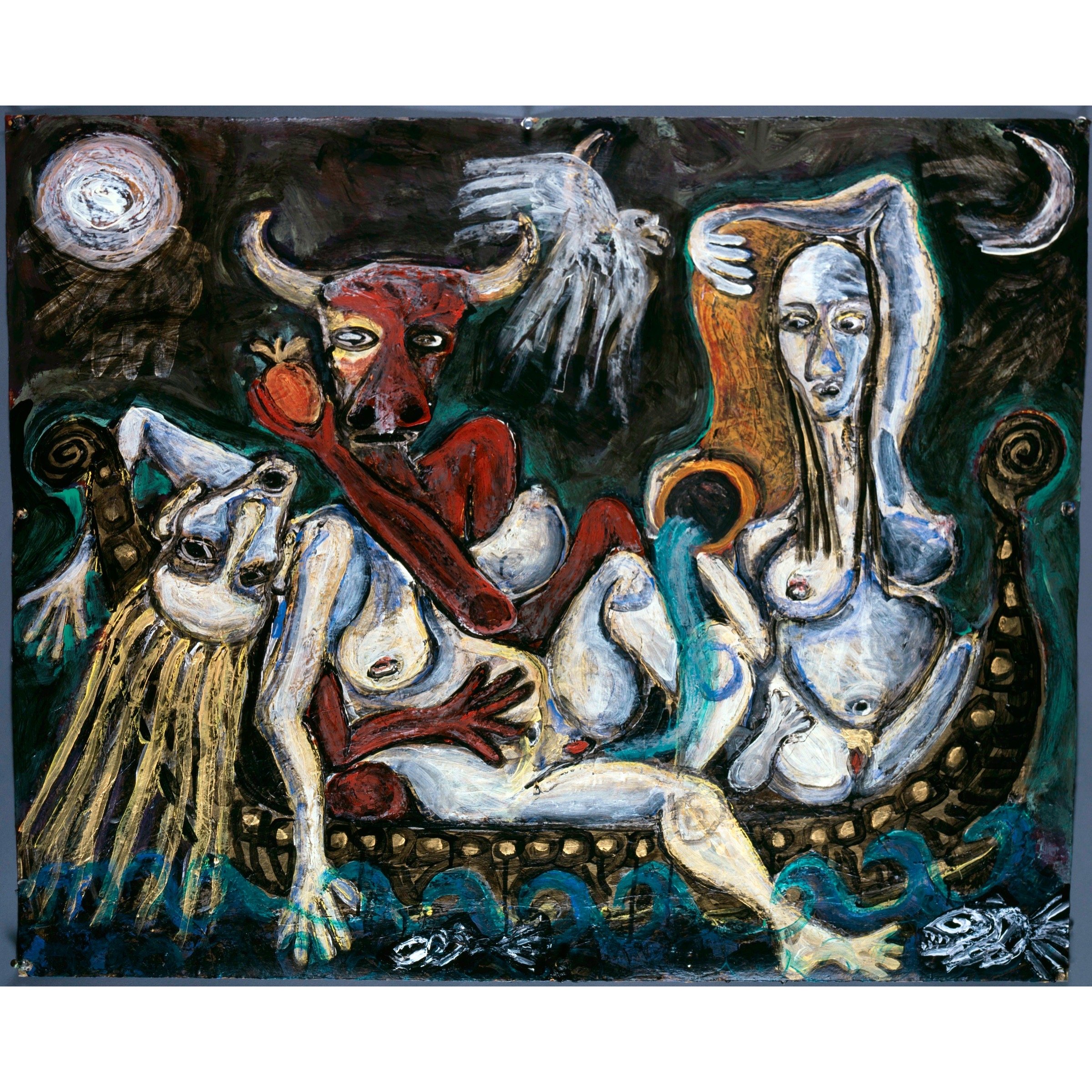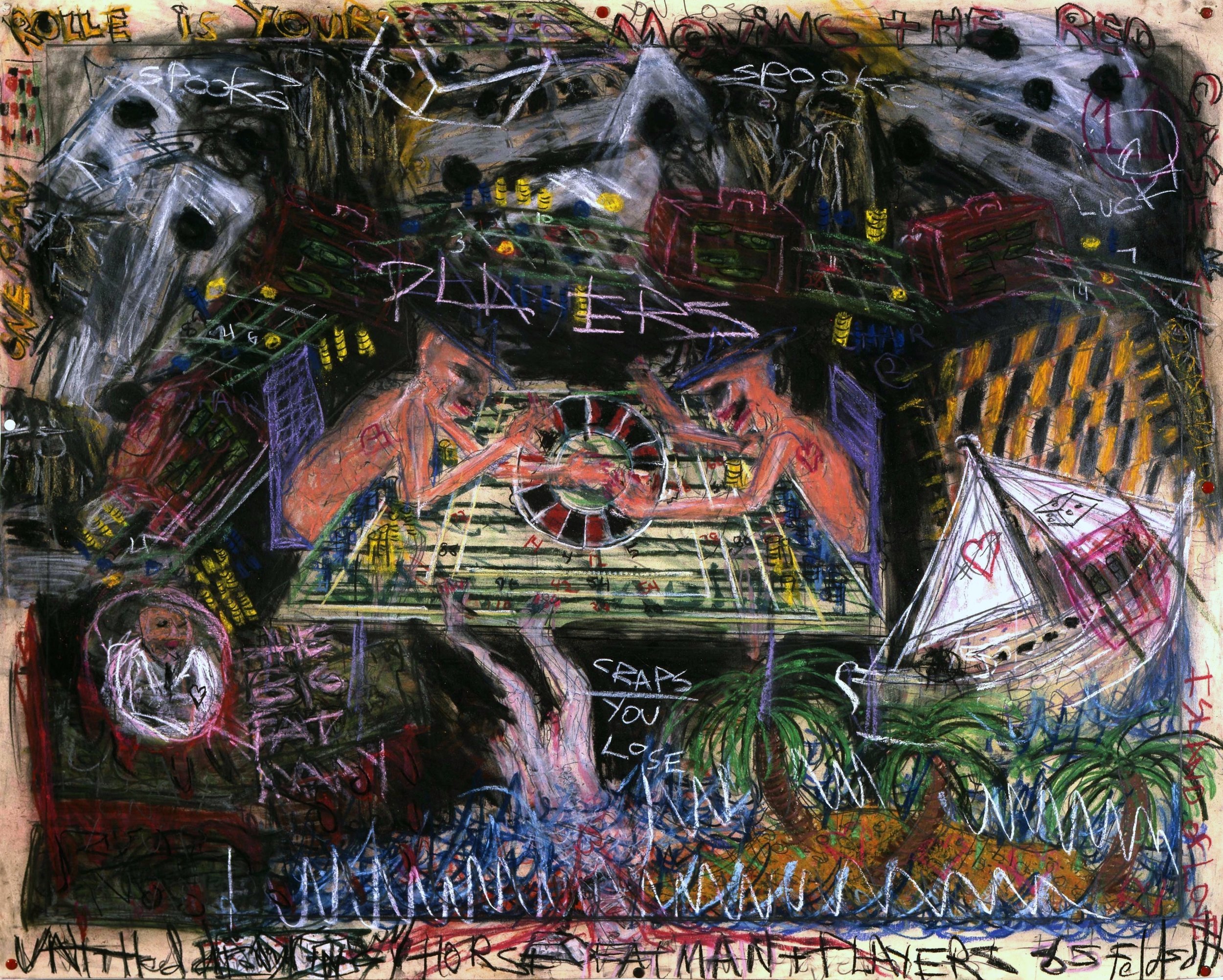2010s. Feldsott’s work continues to take on a life of its own, a style unlike any other contemporary artist, not limited by what the market dictates; a voice without a master.
2000s. After not showing his work for almost two decades, Feldsott resurfaced on the museum and gallery scene in the early 2000s. His work took on an entirely new personality as he produced original pieces at an unprecedented rate.
1990s. The heart of the Amazon begun calling to Feldsott in the 90s, and his work listened, transforming into a much more spiritual reflection of his newfound curiosities.
1980s. The 80s were filled with vibrancy, chaos, instability and deep self-reflection as Feldsott explored his part in the Contemporary Graffiti Art and Neo Expressionism movement.
1970s. Dark shapes, stencils and muted colors encapsulated the 70s for Feldsott. He was in his early twenties and searching for his voice through art, which often manifested itself instinctually as animals and unknown beings.












